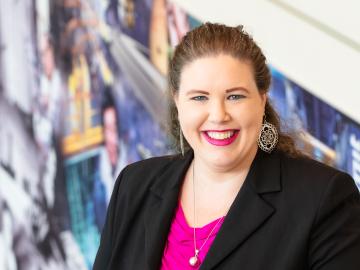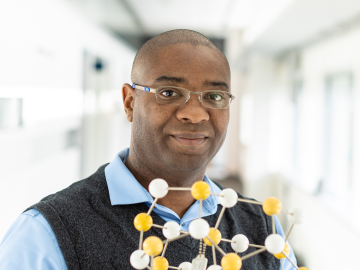
Filter News
Area of Research
- Advanced Manufacturing (6)
- Biology and Environment (35)
- Building Technologies (1)
- Clean Energy (56)
- Climate and Environmental Systems (3)
- Computational Engineering (2)
- Computer Science (12)
- Electricity and Smart Grid (1)
- Functional Materials for Energy (2)
- Fusion and Fission (5)
- Fusion Energy (7)
- Isotopes (7)
- Materials (59)
- Materials Characterization (2)
- Materials for Computing (10)
- Materials Under Extremes (1)
- Mathematics (1)
- National Security (7)
- Neutron Science (12)
- Nuclear Science and Technology (9)
- Nuclear Systems Modeling, Simulation and Validation (1)
- Quantum information Science (4)
- Supercomputing (32)
News Type
News Topics
- (-) Advanced Reactors (18)
- (-) Artificial Intelligence (21)
- (-) Computer Science (57)
- (-) Cybersecurity (9)
- (-) Environment (58)
- (-) Isotopes (14)
- (-) Materials (68)
- (-) Microscopy (20)
- (-) Polymers (14)
- (-) Space Exploration (11)
- 3-D Printing/Advanced Manufacturing (50)
- Big Data (21)
- Bioenergy (22)
- Biology (25)
- Biomedical (15)
- Biotechnology (3)
- Buildings (25)
- Chemical Sciences (24)
- Clean Water (13)
- Climate Change (29)
- Composites (13)
- Coronavirus (15)
- Critical Materials (13)
- Decarbonization (13)
- Energy Storage (48)
- Exascale Computing (4)
- Fossil Energy (1)
- Frontier (4)
- Fusion (17)
- Grid (25)
- High-Performance Computing (23)
- Hydropower (6)
- Irradiation (3)
- ITER (4)
- Machine Learning (13)
- Materials Science (54)
- Mathematics (2)
- Mercury (3)
- Molten Salt (6)
- Nanotechnology (24)
- National Security (10)
- Net Zero (3)
- Neutron Science (41)
- Nuclear Energy (35)
- Partnerships (7)
- Physics (10)
- Quantum Computing (6)
- Quantum Science (14)
- Security (4)
- Simulation (12)
- Software (1)
- Statistics (1)
- Summit (8)
- Sustainable Energy (56)
- Transformational Challenge Reactor (1)
- Transportation (47)
Media Contacts

Anne Campbell, an R&D associate at ORNL, has been selected for an Emerging Professional award from ASTM International. ASTM, formerly the American Society for Testing and Materials, is an international standards organization that develops and publishes voluntary consensus technical standards for a wide range of materials, products, systems and services.

Valentino “Tino” Cooper, a scientist at ORNL, has been appointed to DOE’s Basic Energy Sciences Advisory Committee for a three-year term. Cooper’s research elucidates the fundamental understanding of advanced materials for next-generation energy and information technologies.

Andrew Lupini, a scientist and inventor at ORNL, has been elected Fellow of the Microscopy Society of America.

Marm Dixit, a Weinberg Distinguished Staff Fellow at ORNL has received the 2023 Rosalind Franklin Young Investigator Award.

Oak Ridge National Laboratory scientists exploring bioenergy plant genetics have made a surprising discovery: a protein domain that could lead to new COVID-19 treatments.

A new report published by ORNL assessed how advanced manufacturing and materials, such as 3D printing and novel component coatings, could offer solutions to modernize the existing fleet and design new approaches to hydropower.

Scientists at ORNL developed a competitive, eco-friendly alternative made without harmful blowing agents.

Warming a crystal of the mineral fresnoite, ORNL scientists discovered that excitations called phasons carried heat three times farther and faster than phonons, the excitations that usually carry heat through a material.

A study by Oak Ridge National Laboratory researchers has demonstrated how satellites could enable more efficient, secure quantum networks.

Researchers from Yale University and ORNL collaborated on neutron scattering experiments to study hydrogen atom locations and their effects on iron in a compound similar to those commonly used in industrial catalysts.


